
ORGANIC SYNTHESES
Scope & Guideline
Catalyzing Knowledge in Organic Chemistry
Introduction
Aims and Scopes
- Development of Synthetic Methodologies:
The journal highlights the creation and refinement of synthetic methods, particularly those that offer improved efficiency, selectivity, and sustainability in organic synthesis. - Focus on Heterocyclic Compounds:
A significant emphasis is placed on the synthesis of heterocycles, which are crucial in medicinal chemistry and material science, reflecting their importance in drug development and functional materials. - Biological Activity Evaluation:
Many publications discuss the synthesis of compounds followed by rigorous biological evaluations, showcasing the journal's commitment to bridging synthetic chemistry with pharmacology and toxicology. - Green Chemistry Practices:
The journal promotes environmentally friendly synthetic approaches, including the use of green solvents and catalysts, as well as sustainable methodologies that minimize waste and energy consumption. - Multicomponent Reactions:
There is a notable focus on multicomponent reactions (MCRs), which allow for the efficient synthesis of complex molecules from simple starting materials, reflecting a modern trend in synthetic organic chemistry. - Interdisciplinary Approaches:
Organic Syntheses encourages interdisciplinary research that combines organic synthesis with other fields, such as materials science, biochemistry, and computational modeling to address complex scientific challenges.
Trending and Emerging
- Sustainable and Green Chemistry:
There is a strong trend towards sustainable practices in organic synthesis, with an increasing number of papers focusing on green solvents, catalysts, and methodologies that reduce environmental impact. - Nanotechnology in Synthesis:
The incorporation of nanomaterials and nanocomposites in synthetic methodologies is gaining traction, showcasing the innovative approaches to catalysis and material science. - Medicinal Chemistry and Drug Development:
A notable increase in the synthesis of compounds with potential pharmacological applications reflects a growing interest in drug discovery and development, particularly in the context of new therapeutic agents. - Advanced Characterization Techniques:
Emerging themes include the use of advanced characterization methods to analyze synthesized compounds, enhancing the understanding of structure-activity relationships and guiding future synthesis. - Click Chemistry and Modular Synthesis:
The application of click chemistry and modular approaches in the synthesis of complex molecules is on the rise, facilitating the efficient assembly of diverse chemical architectures. - Computational Chemistry Integration:
There is a growing trend towards integrating computational methods with synthetic chemistry, allowing for predictive modeling and optimization of synthetic pathways.
Declining or Waning
- Traditional Organic Synthesis Techniques:
There appears to be a diminishing emphasis on conventional synthetic methods, as researchers increasingly prioritize innovative and sustainable approaches over traditional techniques. - Basic Organometallic Chemistry:
Research focused solely on fundamental organometallic chemistry without clear applications or advancements in synthesis has become less prevalent, as the field moves towards more applied and interdisciplinary studies. - Isolation and Characterization of Natural Products:
Although still relevant, the isolation and characterization of natural products have seen decreased publication frequency, possibly due to the growing interest in synthetic analogs and their biological activities. - Single-Step Reactions:
The trend towards more complex synthetic routes and multicomponent reactions suggests a decline in the focus on single-step reactions, which may be perceived as less innovative or impactful.
Similar Journals
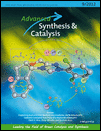
ADVANCED SYNTHESIS & CATALYSIS
Elevating the standards of synthetic and catalytic research.ADVANCED SYNTHESIS & CATALYSIS is a prestigious academic journal published by Wiley-VCH Verlag GmbH, based in Germany. This journal, with ISSN 1615-4150 and E-ISSN 1615-4169, plays a pivotal role in the fields of Chemistry and Chemical Engineering, earning commendable rankings such as Q2 in Catalysis and Q1 in Organic Chemistry in 2023. Its high impact factor and recognition—ranking #18 in both Organic Chemistry and Catalysis—further underscore its significance as a platform for groundbreaking research and innovative methodologies. Spanning from 1996 through 2024, ADVANCED SYNTHESIS & CATALYSIS aims to disseminate high-quality, cutting-edge studies related to synthetic processes and catalytic technologies, ensuring accessibility via their open access options. By fostering a vibrant scholarly community, this journal serves as an essential resource for researchers, professionals, and students dedicated to driving advancements in synthetic and catalytic chemistry.
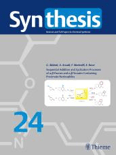
SYNTHESIS-STUTTGART
Innovating Synthetic Methodologies for a Sustainable Future.SYNTHESIS-STUTTGART
Published by the esteemed Georg Thieme Verlag KG, SYNTHESIS-STUTTGART stands as a vital resource in the field of Chemistry, specifically focusing on Organic Chemistry and Catalysis. With an impressive publication history dating back to 1970 and continuing through 2024, it serves as a platform for innovative research and developments in synthetic methodologies and their applications. The journal holds a significant impact factor, reflecting its influence within the academic community, and is recognized in the Scopus rankings as a reputable source in its categories, with a rank of #99/211 in Organic Chemistry and #43/68 in Catalysis. Researchers, professionals, and students alike can benefit greatly from its content, which upholds rigorous peer-review standards and contributes to the global discourse in these critical scientific domains.

Mini-Reviews in Organic Chemistry
Exploring the Frontiers of Organic Chemistry.Mini-Reviews in Organic Chemistry, published by Bentham Science Publishers, is an esteemed journal in the field of organic chemistry, dedicated to presenting concise, thoughtful reviews that encapsulate the rapid advancements in this dynamic area of study. Since its inception in 2005, the journal has become a valuable resource for researchers, professionals, and students interested in the latest developments and trends, featuring an HIndex indicative of its scholarly impact. With its 2023 Scopus ranking placing it in the 52nd percentile and categorized as Q3 in Organic Chemistry, it offers insights that bridge the gap between fundamental research and practical applications. While not an open-access journal, it provides significant access options for institutional journals and library systems. Situated in the United Arab Emirates, Mini-Reviews in Organic Chemistry continues to serve as a beacon for innovation and knowledge dissemination in organic chemistry, ensuring that its audience remains at the forefront of scientific discovery.
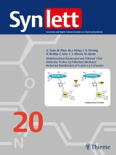
SYNLETT
Pioneering Innovative Pathways in Organic ChemistrySYNLETT is a prominent academic journal dedicated to the field of Organic Chemistry, published by GEORG THIEME VERLAG KG. Since its inception in 1989, the journal has played a critical role in advancing the understanding of synthetic methodologies and organic compounds, offering a platform for innovative research and discoveries. With an ISSN of 0936-5214 and an E-ISSN of 1437-2096, SYNLETT is well-regarded in the academic community, presently positioned in the Q3 quartile for Organic Chemistry according to the 2023 category rankings. The journal is particularly valuable for researchers and professionals seeking insights into contemporary organic synthesis methods and their applications. Although it does not operate under an Open Access model, it remains a crucial resource within the field, contributing to significant advancements and collaborations globally. For those engaged in organic synthesis, SYNLETT not only encapsulates cutting-edge research but also inspires innovation in the discipline.
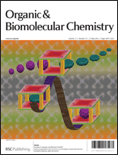
ORGANIC & BIOMOLECULAR CHEMISTRY
Exploring innovative pathways in chemistry research.ORGANIC & BIOMOLECULAR CHEMISTRY is a prestigious academic journal published by the Royal Society of Chemistry, dedicated to advancing the fields of organic and biomolecular chemistry. With its ISSN of 1477-0520 and E-ISSN of 1477-0539, this journal plays a pivotal role in disseminating high-quality research and contributing to the scientific community, particularly in biochemistry, organic chemistry, and physical and theoretical chemistry. Currently ranked in the third quartile for Biochemistry and the second quartile for Organic Chemistry and Physical and Theoretical Chemistry, it caters to a diverse audience of researchers, professionals, and students who seek insightful studies and reviews. With a publication history spanning since 2003 and ongoing till 2024, the journal fosters open access to its articles, encouraging the free exchange of knowledge. Situated in the vibrant academic environment of Cambridge, UK, ORGANIC & BIOMOLECULAR CHEMISTRY serves as a vital resource for innovative research at the intersection of chemical sciences.
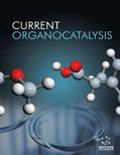
Current Organocatalysis
Connecting Researchers in the World of OrganocatalysisCurrent Organocatalysis is a premier academic journal dedicated to the dynamic field of organocatalysis, published by Bentham Science Publishers, Ltd. Based in the United Arab Emirates, this journal has been a valuable resource for researchers since its inception in 2014 and will continue to publish impactful articles until 2024. The journal provides a platform for sharing groundbreaking research, reviews, and insights that significantly contribute to the fields of Analytical Chemistry, Catalysis, and Organic Chemistry. With a Q4 ranking in several chemistry categories, it identifies and disseminates emerging strategies and methodologies in organocatalysis, promoting collaboration and advancement in the community. While it operates on a subscription basis, the journal ensures accessible content for its audience to further supplement academic learning and professional development. Researchers, professionals, and students are encouraged to explore and contribute to this critical field, leveraging the journal as an essential resource for the latest trends and innovations in organocatalysis.

Heterocyclic Letters
Showcasing Breakthroughs in Heterocyclic CompoundsHeterocyclic Letters is an esteemed journal in the field of synthetic organic chemistry, published by RAMAN PUBL. With ISSN 2231-3087 and E-ISSN 2230-9632, this journal aims to disseminate original research and innovative findings related to heterocyclic compounds, which play a crucial role in medicinal chemistry, material science, and agricultural chemistry. Heterocyclic Letters provides a platform for researchers, professionals, and students to share their insights and advancements, thus fostering academic collaboration and knowledge transfer. The journal is dedicated to maintaining high-quality standards in research publication, making it an essential resource for anyone focused on the latest developments in heterocyclic chemistry. Although it does not currently offer Open Access options, the journal’s rigorous peer-review process ensures that only the most credible and impactful studies are published, contributing significantly to the advancement of the field.
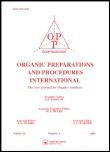
ORGANIC PREPARATIONS AND PROCEDURES INTERNATIONAL
Unveiling the Art of Organic Preparations WorldwideORGANIC PREPARATIONS AND PROCEDURES INTERNATIONAL is a prominent journal in the field of organic chemistry, published by Taylor & Francis Inc. With an ISSN of 0030-4948 and an E-ISSN of 1945-5453, this journal has been a vital resource for researchers since its inception in 1971, showcasing a broad range of methodologies, protocols, and innovative applications within organic synthesis. Although categorized in the Q4 quartile for organic chemistry, the journal provides a critical platform for researchers at all levels to disseminate their findings and to access a wealth of practical organic procedures. It currently ranks #151 out of 211 in the Scopus Organic Chemistry category, underscoring its role in advancing the discipline despite its relatively modest impact factor. The journal offers a diverse collection of scholarly articles that are essential for both professional chemists and students, enriching their understanding of organic preparation techniques. Inviting contributions that encompass the full spectrum of organic synthesis, this journal serves as a valuable conduit for knowledge exchange in the ever-evolving field of organic chemistry.
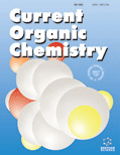
CURRENT ORGANIC CHEMISTRY
Advancing the Frontiers of Organic ChemistryCURRENT ORGANIC CHEMISTRY, published by Bentham Science Publishers, stands as a pivotal platform in the field of organic chemistry, providing innovative insights and advancements since its inception in 1997. With an ISSN of 1385-2728 and an E-ISSN of 1875-5348, this esteemed journal has carved a niche in the academic landscape, currently ranking in the Q3 category for Organic Chemistry according to the 2023 metrics. Operating from the United Arab Emirates, it engages a diverse audience of researchers, professionals, and students by delivering quality peer-reviewed articles that cover a broad spectrum of organic chemistry research. Although the journal does not offer open access, it remains a respected source of knowledge, indexed in Scopus with a percentile ranking of 43, encouraging rigorous discourse and the dissemination of cutting-edge findings. With continuous publication through 2024, CURRENT ORGANIC CHEMISTRY is dedicated to advancing the frontiers of organic chemistry research and technology.
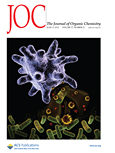
JOURNAL OF ORGANIC CHEMISTRY
Pioneering Discoveries in Organic Chemistry Since 1936Journal of Organic Chemistry, published by the American Chemical Society, is a prestigious peer-reviewed journal dedicated to advancing the field of organic chemistry. With an ISSN of 0022-3263 and an E-ISSN of 1520-6904, this journal has established itself as a key platform for disseminating high-quality research since its inception in 1936. Residing in the Q2 category for Organic Chemistry as of 2023, it ranks #64 out of 211 in Scopus, positioning itself within the top 69th percentile of its field. Researchers and professionals can access vital findings and innovative methodologies that drive the understanding and application of organic chemical principles. Although the journal is not open access, it remains a crucial resource in academia and industry, contributing significantly to the scientific community's knowledge base. For detailed insights and cutting-edge research, the journal continues to be an essential read for those engaged in the dynamic and evolving landscape of organic chemistry.